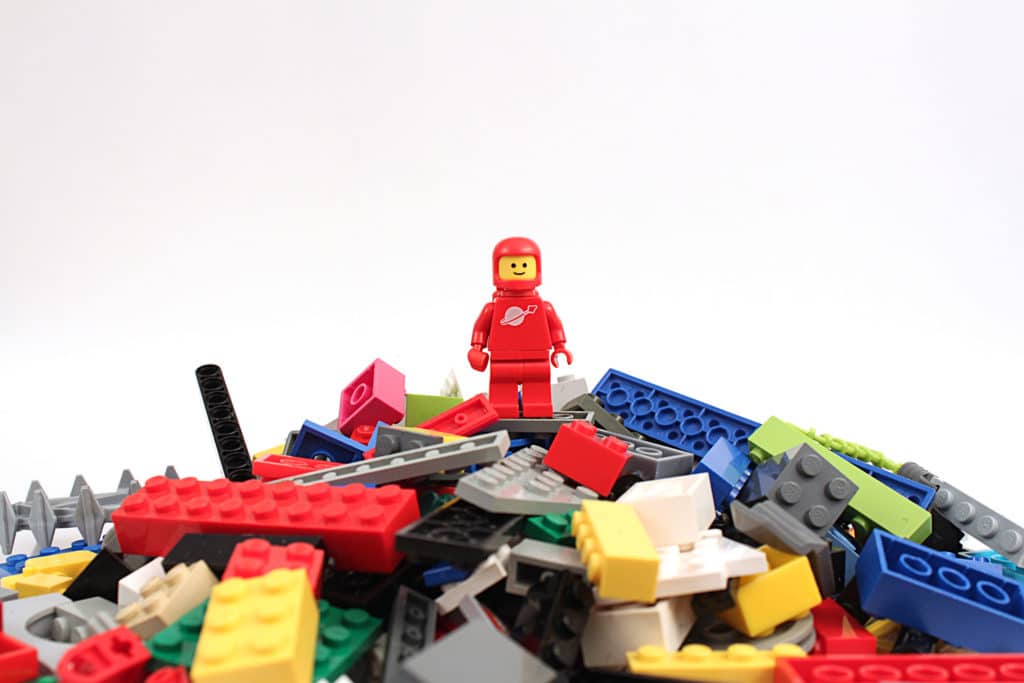Beginner French — Level A1
Overview
What is the word order with French adjectives? In French, the main rule regarding the position of adjectives is that they usually come AFTER the noun, but as always in French, there are exceptions! For example, there is a small group of common adjectives whose meaning changes depending on whether they come before the noun or go after it.
Back to the Course
Hi, you can review other topics from this course level.
Visit the Shop
Start classes with one of our professional teachers today.
French The Order of Adjectives
As we learned in Module 10, most French adjectives are placed after the word being described in the sentence. However, there are several exceptions to this rule. These adjectives, understood by the acronym BANGS, are placed before the word being described (as one would do in English).
|
BANGS |
Adjective Examples Masc. / Fem. |
Example Sentence |
Translation |
|
Beauty |
beau/belle joli/jolie |
La jolie fille s’appelle Ana. |
The pretty girl is named Ana. |
|
Age |
nouveau/nouvelle vieux/vieille jeune |
La vieille voiture est rouge. |
The old car is red. |
|
Number |
un, deux, trois…. premier/première plusieurs |
Il y a plusieurs problèmes au bureau. |
There are several problems in the office. |
|
Goodness |
bon/bonne mauvais/mauvaise |
Il donne de l’argent aux pauvres — il est un bon homme. |
He gives money to the poor — he is a good man. |
|
Size |
grand/grande petit/petite long/longue |
Le grand homme joue au basket. |
The tall man plays basketball. |
BANGS adjectives before a vowel
There are some adjectives that change to either the masculine or feminine forms when it is placed before a word that begins with a vowel. In these instances, these adjectives have a unique spelling. Examples of these adjectives are beau, nouveau, and vieux.
Un bel appartement A beautiful apartment
Un novel hôpital A new hospital
Un vieil homme An old man
Don’t miss out!
Hi there, you are currently not signed in.
CORE Languages students who are signed in get credit for daily engagement while studying. Additionally, save your quiz and test grades by logging in. Even if you are just a language buff wanting to get a bit more studying in, Sign In and receive weekly content updates, access to Free PDF guides and special pricing on online training from our shop.
Additional Activities
Review the unit lesson above and complete additional activities to build your understanding of this topic. For the activities listed below, make sure you are signed in to keep track of your progress, to receive our weekly topics e-mail and special promotions! We are letting you know, you are not signed in. And progress will not be saved.
- Video
- Writing Exercise
- Vocabulary
- Helpful Links
Irregular Adjective Agreement in French.
-credit: Madame Peterson
Directions: Choose which form of the adjective matches the gender and number of the italicized word. Then, rewrite each sentence placing the adjective in the appropriate place (either before or after the word).
- La ________ ville _________ a été fondée en 1798. (vieux / vieille )
- Le ________ chien ________ s’appelle Max. (petite / petit)
- Les sports ont des __________ règles ___________. (intéressant / intéressantes)
- Samantha a acheté (bought) un ________ ordinateur _______. (nouveau / nouvel).
- Le théâtre au centre-ville a des _________ pièces _________! (fantastiques / fantastique)
Answers and Translation
- La vieille ville a été fondée en 1798. / The old city was founded in 1798.
- Le petit chien s’appelle Max. / The little dog is named Max.
- Les sports ont des règles intéressantes. / Sports have some interesting rules.
- Samantha a acheté (bought) un nouvel ordinateur. / Samantha bought a new computer
- Le théâtre au centre-ville a des pièces fantastiques! /The theater downtown has some fantastic plays!
Quiz
What do you know?
You can complete the following quiz to see if you truly understand this unit’s content.
Guide to Regular and Irregular French Adjectives
You use adjectives every day. Whether it’s the color of the sky or the size of your house, you need adjectives to talk about them. They’re the words you use to describe nouns. For complete French fluency, you need to master the grammar behind French adjectives. Learn when to use them, how to conjugate them, and what exceptions you have to look out for. With this knowledge, you’re just a step away from speaking French fluently. Here’s everything you need to know about common French adjectives.

Psst! Did you know we have a language learning app?
You’re only one click away!
French Adjective Conjugation
In English, adjectives don’t change. But in French, you need to conjugate adjectives. Since the adjectives describe nouns, they need to fit the noun’s characteristics. The best way to start conjugating French adjectives is to take a look at the noun they represent:
- Is the noun masculine or feminine?
- Is noun singular or plural?
Once you know the gender and the number of the noun, you can conjugate French adjectives by putting the following letters at the end:
|
Masculine |
Feminine |
|
|
Singular |
– |
-e |
|
Plural |
-s |
-es |
Nothing changes with the adjective if the noun is singular and masculine. But, if it’s feminine or plural, you need to add the respective letter to the end. This may seem complicated, but you’ll get the hang of this fast. Here are some examples to show you how adjective conjugation happens in French:
- L’homme intelligent. – The smart man.
- La femme intelligente. – The smart woman.
- L’hommes intelligents. – The smart men.
- La femmes intelligentes. – The smart women.
Notice that in the plural form the adjective and the noun both pick up an extra “s”.
Exceptions to French Adjective Congujation
Although most adjectives behave like this around nouns, there are of course exceptions to every French grammar rule. These are some endings that change form according to the gender of the noun:
Irregular Feminine Adjectives in French
1. Adjectives ending in –eux change to –euse
- Un homme heureux. – A happy man.
- Une femme heureuse. – A happy woman.
2. For adjectives ending in –é (note the accent) we add another e
- Un homme énervé. – An annoyed man.
- Une femme énervée. – An annoyed woman.
3. Adjectives ending in -er change to -ère
- Un homme cher. – A dear man.
- Une femme chère. – A dear woman.
4. Adjectives ending in -f change to -ve
- Un homme créatif. – A creative man.
- Une femme créative. – A creative woman.
5. Adjectives ending in a silent e don’t change
- Un homme malade. – A sick man.
- Une femme malade. – A sick woman.
Irregular Plural Adjectives in French
1. Adjectives ending in “-s” and “-x” don’t change
- un chapeau gris (a grey hat) – deux chapeaux gris (two grey hats)
- il est vieux (he is old) – ils sont vieux (they are old).
2. Adjectives ending in “-eau” use “-x” for their plural form
- un nouveau train (a new train) – deux nouveaux trains (two new trains)
List of Irregular Adjectives in French
There are always exceptions when it comes to French grammar. And it’s the same with adjectives. These adjectives are irregular and unbound by rules. When you conjugate them from masculine to feminine, watch out for them. This handy list contains all of the irregular adjectives in French you should be careful with:
|
English Adjective |
Masculine |
Feminine |
|
White |
Blanc |
Blanche |
|
Fresh |
Frais |
Fraîche |
|
Dry |
Sec |
Sèche |
|
Sweet |
Doux |
Douce |
|
False |
Faux |
Fausse |
|
Good |
Bon |
Bonne |
Unfortunately, there are three adjectives that are more complex because the masculine version also varies, depending on the beginning of the noun they describe.
|
Adjective |
Masculine |
Feminine |
|
|
Before a consonant |
Before a vowel or h |
||
|
New |
Nouveau |
Nouvel |
Nouvelle |
|
Old |
Vieux |
Vieil |
Vieille |
|
Beautiful |
Beau |
Bel |
Belle |
Adjective Placement
In English when you describe something you put the adjective before the noun. However, in French, it’s the opposite. Regular adjectives come after the noun in French. That’s just the way it works with the word order of adjectives in French. While this seems like a hard thing to get used to, it’ll soon become second nature.
- Un cheval brun. – A brown horse.
- Une fille intelligente. – A smart girl.
- Jumeaux identiques – Identical twins.
But, of course, there’s an exception to this word order for adjectives too. Some French adjectives just don’t play by the rules.
List of French BANGS Adjectives
While regular adjectives come after the noun, certain adjectives in French always come before. We call these French BANGS adjectives, because they all belong to one of these five categories:
- Beauty
- Age
- Number
- Goodness
- Size
Bangs! This acronym should help you remember the categories. They’re very common adjectives, so you’ll surely use them in everyday French conversations. This useful list of BANGS adjectives in French can help enhance your vocabulary:
|
Adjective |
Masculine |
Feminine |
||
|
Singular |
Plural |
Singular |
Plural |
|
|
Beautiful |
Beau (Bel) |
Beaux |
Belle |
Belles |
|
Nice |
Gentil |
Gentils |
Gentille |
Gentilles |
|
Good |
Bon |
Bons |
Bonne |
Bonnes |
|
Bad |
Mauvais |
Mauvais |
Mauvaise |
Mauvaises |
|
Better/best |
Meilleur |
Meilleurs |
Meilleure |
Meilleures |
|
Dear |
Cher |
Chers |
Chère |
Chères |
|
Big/great |
Grand |
Grands |
Grande |
Grandes |
|
Young |
Jeune |
Jeunes |
Jeune |
Jeunes |
|
Old |
Vieux (Vieil) |
Vieux |
Vieille |
Vieilles |
|
New |
Nouveau (Nouvel) |
Nouveaux |
Nouvelle |
Nouvelles |
|
Pretty |
Joli |
Jolis |
Jolie |
Jolies |
|
Long |
Long |
Longs |
Longue |
Longues |
|
Little |
Petit |
Petits |
Petite |
Petites |
Here are some examples, to show you how the BANGS irregular adjectives work in a sentence:
- Un petit garçon. – A small boy.
- Une jolie fille. – A pretty girl.
- Les gentils hommes. – The nice men.
- Les belles femmes. – The beautiful women.
Demonstrative Adjectives
Demonstrative adjectives are used to point to specific objects without naming them: “this,” “that,” “these,” and “those.” French uses these as well. “This” and “that” are interchangeable with the words “ce,” “cet,” and “cette.” “These” and “those” are both covered with the word “ces.” Demonstrative adjectives always come before the noun. The different forms indicate the gender and the number of the noun they describe.
|
Masculine |
Feminine |
English Meaning |
|
|
Singular |
ce (cet) |
cette |
this |
|
Plural |
ces |
ces |
these |
While the singular masculine demonstrative adjective is “ce”, if the noun begins with a vowel, it changes to “cet” Here are some examples to show you how to use French demonstrative adjectives in a sentence:
- ce bâtiment – this/that building
- cet outil – this/that tool
- cette montagne – this/that mountain
- ces bâtiments – these/those buildings
- ces montagnes – these/those mountains
Placing Emphasis on French Demonstrative Adjectives
You can stress the fact that you’re pointing to something by adding by adding “-ci” (this/these) or “-là” (that/those) to the noun. This also helps differentiate between the different proximities. If something’s close you add “-ci”, and if the thing you’re pointing out is far, you add “-là”.
- ce bâtiment-ci – this building
- cet outil-ci – this tool
- cette montagne-là – that mountain
- ces bâtiments-là – those buildings
- ces montagnes-ci – these mountains
Comparative Adjectives in French
In English, you either use the words “more (than)” or “less (than)” before a noun, or add “-er” to the end of a word to show how it compares to something else.
In French, the same principle applies. You put “plus” before the adjective to say “more”, and “moins” for less. Then, you add “que” (then) to compare it to something else.
plus / moins _____ que
- Cette chemise est plus courte que celle que je ports. – This shirt is shorter than the one I’m wearing.
- Il est plus têtu que son frère. – He’s more stubborn than his brother.
- Ce village est moins intéressant que celui que nous avons visité auparavant. – This village is less interesting than the one we visited earlier.
Superlative Adjectives in French
When you had the best ice cream or the worst day of your life, you want to talk about it. And the only way you can do that is with French superlative adjectives. These signal the end of the line on the scale of comparative adjectives. Superlatives in English are “most”, “least”, or “-est” in English.
Forming superlative adjectives is a little easier in French. After the article, you do the same thing as before with comparative adjectives: add “plus” for more, and “moins” for less before the adjective. But, you don’t add the que after.
le/la/les + plus / moins _____
- C’était la plus jolie lampe du magasin. – That was the prettiest lamp in the store.
- Ma soeur est la personne la plus optimiste que je connaisse. – My sister is the most optimistic person I know.
- L’expérience la moins agréable offre une leçon précieuse. – The least pleasant experience offers a valuable lesson.
- Les échantillons les plus rares n’étaient pas disponibles au public. – The rarest samples weren’t available to the public.
Irregular Comparative and Superlative Adjectives in French
As always, the irregulars. Even with comparative and superlatives adjectives, there are a few exceptions to French adjectives. Luckily, there aren’t that many to remember.
|
Base |
Comparative |
Superlative |
|
bon (good) |
meilleur (better, masculine) meilleure (better, feminine) |
le meilleure (best, masculine) la meilleure (best, feminine) |
|
bien (well) |
mieux (better) |
le mieux (best) |
|
mal (bad) |
pire (worse) |
le pire (worst) |
Learn French Adjectives Naturally
French adjectives are an integral part of grammar. You need to know how to conjugate them to reach French fluency. But, you don’t have to memorize them. Learn them naturally with OptiLingo.
OptiLingo is an app that’s built on the most effective language learning method. It gives you the most useful French vocabulary, so you learn exactly how local French people speak. By learning them, you can learn French adjectives in their natural environments. To reach French fluency fast without wasting your time download OptiLingo today!
Just here for the exercises? Click here.
Do French adjectives come before or after the noun?
Generally speaking, most French adjectives come after the noun they are describing. However there are exceptions: some adjectives come before the noun, while there are others that change their meaning depending on whether they come before or after.
Learn about the rules for adjective placement in French grammar with Lingolia’s quick and easy examples, then put your knowledge to the test in the free exercises.
Example
Napoléon n’était pas un homme grand, mais un grand homme.
Where to place the adjective in French
- Usually the adjective comes after the noun it is describing.
- Example:
- le lac geléthe frozen lake
- Colours also come after the noun.
- Example:
- le tableau noirthe black board
- Short, often-used adjectives generally come before the noun (beau, bon, bref, grand, gros, faux, haut, jeune, joli, mauvais, meilleur, nouveau, petit, vieux).
- Example:
- la jolie fleurthe beautiful flower
- If a noun is accompanied by two or more adjectives, they are placed after the noun if they are connected by a conjunction such as mais, donc, or, car, et, ou, ni … ni etc.
- Example:
- Elle avait un visage beau mais sévère.She had a beautiful but stern face.
- If they are not connected, they frame the noun.
- Example:
- Elle portait une grande jupe bleue.She wore a wide blue skirt.
- Some adjectives can come either before or after the noun, but their placement changes their meaning (see the table below).
- Examples:
- un homme granda tall man
- un grand hommea great man
Adjectives that change their meaning depending on their position
1 The basic rules
- When adjectives are used right beside the noun they are describing, they go BEFORE it in English. French adjectives usually go AFTER the noun.
| l’heure exacte | the right time |
| la page suivante | the following page |
- Adjectives describing colours, shapes or nationalities always go AFTER the noun.
| des cravates rouges | red ties |
| une table ronde | a round table |
| un mot français | a French word |
- Some very common adjectives usually come BEFORE the noun.
| beau | lovely, beautiful, good-looking, handsome |
| bon | good, right |
| court | short |
| grand | tall, big, long, great |
| gros | big, fat |
| haut | high |
| jeune | young |
| joli | pretty |
| long | long |
| mauvais | bad, poor |
| meilleur | better |
| nouveau | new |
| petit | small, little |
| premier | first |
| vieux | old |
| une belle journée | a lovely day |
| Bonne chance! | Good luck! |
- There is a small group of common adjectives whose meaning changes depending on whether they come before the noun or go after it.
| Adjective | Example before noun | Meaning | Example after noun | Meaning |
| ancien | un ancien collègue | a former colleague | un fauteuil ancien | an antique chair |
| cher | Chère Julie | Dear Julie | une robe chère | an expensive dress |
| propre | ma propre chambre | my own bedroom | un mouchoir propre | a clean handkerchief |
Tipdernier (meaning last) and prochain (meaning next) go AFTER nouns relating to time, for example, semaine (meaning week) and mois (meaning month). Otherwise they go BEFORE the noun.
| la semaine dernière | last week |
| la dernière fois que je t’ai vu | the last time I saw you |
| la semaine prochaine | next week |
| la prochaine fois que j’y vais | the next time I go there |
Grammar Extra!When certain adjectives are used with certain nouns, they take on a meaning you cannot always guess. You may need to check these in your dictionary and learn them. Here are a few:
| mon petit ami | my boyfriend |
| les petits pois | peas |
| les grandes vacances | the summer holidays |
| une grande personne | an adult, a grown-up |
2 Using more than one adjective
- In French you can use more than one adjective at a time to describe someone or something. If one of the adjectives usually comes BEFORE the noun and the other usually goes AFTER the noun, the word order follows the usual pattern.
| une jeune femme blonde | a young blonde woman |
| un nouveau film intéressant | an interesting new film |
- If both adjectives usually come AFTER the noun, they are joined together with et (meaning and).
| un homme mince et laid | a thin, ugly man |
| une personne intelligente et drôle | an intelligent, funny person |
Key points
- Most French adjectives go after the noun they describe.
- Some very common adjectives usually come before the noun: bon/mauvais, court/long, grand/petit, jeune/nouveau/vieux, gros, haut, beau, joli, premier, meilleur.
- The meaning of some adjectives such as ancien, cher and propre varies according to the position in the sentence.

By
Last updated:
December 14, 2022
Stand Tall! The Guide to Confidence with French Word Order
Is your French still in pieces?
Learning French can be like drawing up plans for a new building.
And what would a building be like without structure?
It probably would not be very safe.
It probably would not serve its intended function.
It probably would not make much sense.
It might not even be able to stand.
Language is the same way.
We can’t just throw words around and expect to be understood.
Even if we chose all the right words, we might very well just be sputtering nonsense if they are not in the right order.
And French has a lot of rules about word order.
It may seem tedious, but these rules, like the laws of physics, ensure that all the elements of your sentence are in the right place to remain standing.
In this post, we are going to go through the basic elements of French word order, so you can build a strong foundation for your French sentences.
Download:
This blog post is available as a convenient and portable PDF that you
can take anywhere.
Click here to get a copy. (Download)
Structuring a Sentence: The Blueprint
We know there is a lot of information to cover when it comes to French word order, so we are going to start by taking a look at the “big picture,” or blueprint, of a French sentence. This will give you a basic idea of word order without overwhelming you with details and exceptions (that will come later!).
- Subject. Good news! As with English, the subject — for example, je (I), tu (you), il/elle/on (he/she/one or we), nous (we), vous (you) and ils/elles (they) — usually goes at the beginning of a sentence.
- Direct and indirect object pronouns, y and en. We will explain these words more in-depth later on, but for now just know that they are helpful because they keep you from having to repeat words/phrases that are understood in context.
- Verb. Next is the verb, or “action word,” like voyager (travel) or simply être (to be).
- Direct object. A direct object is something the verb acts on. For instance, in the sentence “J’ai lavé ma voiture” (I washed my car), voiture (car) is the direct object because it is what is being washed.
- Indirect object. An indirect object, as the name implies, is “indirectly” affected by the verb. In the sentence “J’ai parlé avec ma soeur” (I talked with my sister), the indirect object is mon soeur (my sister).
- Adjective. Sorry, here is a big point of difference between English and French! In French, adjectives normally go after the noun they modify (of course there are exceptions, which we will deal with later).
- Modifiers/additional details. Finally, any more details generally go at the end of the sentence.
So to sum up:
- Subject.
- Direct and indirect object pronouns, y and en.
- Verb.
- Direct object.
- Indirect object.
- Adjective.
- Modifiers/additional details.
Of course, not every sentence will include all of these components, but it gives you a good idea of what to expect.
For example, this sentence includes several of the above components:
Je vous ai envoyé un email important ce soir. (I sent you an important email this evening.)
Je (subject) vous (indirect object pronoun) ai envoyé (verb) un email (direct object) important (adjective) ce soir (additional detail).
Note that vous, while it technically functions as an indirect object as the person the email was written to, is considered a pronoun and is therefore placed before the verb (we will talk more about word order with direct and indirect object pronouns later).
This is because the word vous is itself a pronoun. That is, if we replaced vous with a name, such as “Paul,” it would act as an indirect object and go after the direct object, un email, like so:
J’ai envoyé un email important à Paul ce soir. (I sent an important email to Paul this evening.)
Below, we will go into more detail about different elements of sentences you need to understand in order to get all of your French in order. We have included links to resources to help introduce you to these concepts.
Getting Curious: Questions
If you are learning French, you probably have a lot of questions on your mind. And since conversation is based on a back-and-forth exchange of ideas, you need to be able to ask questions (for clarification, getting more information, changing the subject, etc.).
One of the simplest ways to form a question in French is by inversion. This means the subject and the verb switch places and are hyphenated.
For example, to make “Vous voulez du chocolat” (You want some chocolate) a question, vous (you) and voulez (want) switch places, so that we get:
Voulez-vous du chocolat ? (Do you want some chocolate?)
Inversion is not just for “yes-or-no” questions, though. You may employ a “question word” such as quel (what/which — add “le” for the feminine form and “-s” for the plural) at the beginning of the sentence.
So to ask someone their age, we would say:
Quel âge as-tu ? (Literally, “What age do you have?”)
Since quel calls for a noun, âge follows directly after and the inversion comes last.
Here are some more “question words” you might want to ask:
- Pourquoi (why)
- Comment (how)
- Qui (who)
- Quand (when)
- Oú (where)
- Combien (how many)
Quand allez-vous au musée ? (When are you going to the museum?)
Here, the inversion comes right after the “question word,” because it describes location and is not directly linked to quand.
If you are asking a basic yes-or-no question, you can simply place est-ce que (literally, “is it that”) in front of the phrase you want to confirm.
Thus, “Elle est allée à l’épicerie” (She went to the grocery store), in question form, is:
Est-ce qu‘elle est allée à l’épicerie ? (Did she go to the grocery store?)
Or, if you want to really make things easy for yourself, when you want to ask a yes-or-no question, you don’t have to change the sentence structure at all.
Simply say the phrase you are looking to confirm and raise your intonation at the end. We do the same thing in English all the time.
To continue from the previous example, you can ask “Elle est allée à l’épicerie ?” just as you might say “She went to the grocery store?” in English by emphasizing the last syllable.
If you are still a bit confused (I was when I first learned this), you can hear an example here.
Getting the Details: Adjectives
Remember how I said that French adjectives can seem kind of weird because they usually go after the noun they modify, not before? To give a simple example, one would say une maison bleue (a blue house).
Do you also remember how I said that there are exceptions to this? Aaaah, yes. The infamous exceptions to the French grammar rules.
Fortunately, we do have a handy acronym to help remember what these exceptions are, so don’t panic yet! This acronym is BAGS:
- Beauty. Words like joli (pretty) and beau (handsome): un joli tableau (a pretty painting)
- Age. Words such as vieux (old) and jeune (young): un jeune homme (a young man)
- Goodness. Words such as bon (good) and mauvais (bad): un bon livre (a good book)
- Size. Words such as petit (small) and grand (big): une grande ville (a big city)
Since an adjective may come either before or after the noun, it is possible for a noun to have an adjective both before and after it, such as in ma nouvelle robe rouge (my new red dress). Since “new” describe age, it precedes the noun.
How Is That Done? Adverbs
Adverbs describe how something is done. Just as adjectives modify nouns, adverbs modify verbs, adjectives or other adverbs.
J’ai marché lentement au parc. (I slowly walked to the park.)
As in the sentence above, adverbs usually go after the verb (or other word) they modify.
But, as always, there are exceptions! Some adverbs go at the beginning of the sentence. These are generally adverbs that describe time or affect the sentence as a whole.
Hier, j’ai fait le linge. (Yesterday, I did the laundry.)
Heureusement, elle a reçu une bonne note. (Fortunately, she got a good grade.)
Some short, common adverbs like bien (well) and jamais (never), when used with the passé composé (perfect tense), actually go between the participe passé (past participle) and verbe auxiliare (auxiliary verb):
Il était un bon étudiant parce qu’il a souvent étudié. (He was a good student because he studied often.)
To get some practice with all of these patterns, try out this quiz, which tests where to properly place adverbs in a sentence.
Why So Negative? Ne…Pas
Sometimes you should just say no. One of the peculiar things about French is that they use the double negative (meaning you have to, in essence, say “not” twice), which is technically grammatically incorrect in English (e.g., “I don’t have no money”).
So, in order to effectively negate a French sentence, we must include both ne and pas (though often in slang/informal French, ne is omitted). Ne goes before the verb and pas comes after (ne + verbe + pas):
Vous ne pouvez pas me laisser tout seul ! (You cannot leave me all alone!)
In the passé composé, ne comes before the verbe auxiliare and pas goes before the participe passé (ne + verbe auxiliare + pas + participe passé):
Nous n’avons pas compris la leçon. (We did not understand the lesson.)
Need a bit of practice to fully understand this lesson? This quiz tests how to make a French sentence negative using ne…pas and other forms of negation.
I Object! Direct and Indirect Objects
Good news! We have a few more similarities to English.
The direct object goes after the verb it is being acted on:
As-tu lu ce merveilleux livre ? (Have you read this wonderful book?)
Note that merveilleux goes before the noun because it is considered a “goodness” adjective. Plus, you get another example of using inversion to ask a question!
Next comes the indirect object, which, as the name implies, is “indirectly” acted upon by the verb. This may seem a bit confusing at first, but it makes sense once you see what these look like in context:
Il écrit une lettre à son frère. (He wrote a letter to his brother.)
Une lettre (a letter) is the direct object; this is what was written. Son frère (his brother) is the indirect object because he is whom the letter was written for.
On a parlé avec elle ce soir. (We talked with her this evening.)
Here, there is no direct object. But elle (her) is an indirect object because we didn’t talk her; we talked with her.
Note that, sometimes, we must use a preposition such as à (to) or avec (with). As you can see, these prepositions usually correspond to their English counterparts.
Right to the Point: Direct Object Pronouns
Direct object pronouns might seem a bit complicated at first, but in the long run, they do make things easier for you.
Let’s say you are talking with someone about a movie. No one wants to say “Parc Jurassique” (“Jurassic Park”) twenty times. Most likely, you will quickly switch to “it” instead of saying the whole name every time.
That is exactly what direct object pronouns do in French. They replace a previously established direct object with a pronoun.
These include le, la, l’ and les, depending on the object’s gender and number (use l’ if the pronoun goes right before a vowel). Or, if the direct object is a first or second person (me, you, us), you would employ me, te, vous or nous.
J’adore le “Parc Jurassique” ! Je l’ai vu cent fois ! (I love “Jurassic Park”! I’ve seen it a hundred times!)
Since un film (a movie) is masculine, we would use le to replace “Parc Jurassique,” but since the next word begins with a vowel, we make it l’.
As in the previous example, the direct object pronoun goes before the verb. In the passe composé, this means it precedes the verbe auxiliare.
In the present tense, the pronoun will similarly go right before the conjugated verb:
Aimez-vous le français ? (Do you like French?)
Oui, je le trouve merveilleux ! (Yes, I think it is wonderful!)
Now, the futur proche (near future) is a bit different. The pronoun goes after, not before, the conjugated verb:
Avez-vous lu “Notre-Dame de Paris” ? (Have you read “The Hunchback of Notre Dame”?)
Note: The original French title is literally “Notre Dame of Paris,” but for whatever reason, when it was translated, the title was changed.
Pas encore. Je vais le commencer ce week-end. (Not yet. I am going to start it this weekend.)
One more weird thing (I warned you it would seem complicated). When using a direct object pronoun in the passé composé, the participe passé must agree in gender and number with the pronoun. This means adding an “-e” for feminine and/or “-s” for plural.
Comment as-tu trouvé tes nouveaux professeurs ? (What did you think of your new teachers?)
Je les ai trouvés absolument ennuyeux ! (I thought they were absolutely boring!)
Check out this quiz to practice replacing a direct object with a direct object pronoun and properly placing it in a sentence.
Beating Around the Bush: Indirect Object Pronouns
Just as direct object pronouns stand in for a previously established direct object, indirect object pronouns work the same way for indirect objects. Remember, these are objects that are “indirectly” acted upon by the verb.
A simple (English!) example is “I wrote him a letter.” Him is an indirect object because “him” is not what is being written, but “him” nevertheless receives the action because the letter is being written to “him.”
So what makes indirect object pronouns different from direct ones? First, we use different words. The most common include lui for the singular, and leur for the plural.
But if the indirect object is in the first or second person, it becomes me, te, vous or nous, as with direct object pronouns.
The second major difference is that we don’t have to worry about agreement in the passé composé because, again, it receives the action indirectly:
Est-ce qu’il a téléphoné à ses amis ? (Did he call his friends?)
Oui, il leur a téléphoné hier soir. (Yes, he called them last night.)
As you may have noticed in the above example, indirect object pronouns follow the same rules as direct object pronouns when it comes to order.
Qu’est-ce que tu fais pour l’anniversaire de ton père ? (What are you doing for your dad’s birthday?)
Je lui donne une nouvelle montre. (I am giving him a new watch.)
If we want to use both a direct object pronoun and an indirect object pronoun in the same sentence, we will put the direct object pronoun first.
“Elle a acheté ce sac à sa meilleure amie” (She bought this bag from her best friend) would become:
Elle le lui a acheté. (She bought it from her.)
“Nous envoyons un cadeau à nos professeurs favoris” (We are sending a gift to our favorite teachers) would become:
Nous le leur envoyons. (We are sending it to them.)
To try your hand at this, take a look at this quiz, which has you identify the sentence with an indirect object pronoun that could replace the sentence they give you.
Last, But Not Least: En and Y
En and y are similar to direct and indirect objects in that they replace an understood phrase (meaning you don’t have to repeat the same few words over and over).
En replaces phrases beginning with a partitive article (de, du, de la, d’), which is used to, in essence, denote an indeterminate “part” of something, like in du chocolat (some chocolate).
En may also replace most phrases beginning with some form of de, such as when it is employed with an infinitive.
“J’ai décidé de passer mes vacances en France” (I decided to spend my vacation in France) could become simply:
J’en ai décidé. (I have decided on it.)
Finally, en stands in for phrases expressing number or quantity.
For instance, if a specific number is given, as in “Il a lu cinq livres ce mois” (He read five books this month), then we replace the noun with en and retain the number itself at the end of the sentence:
Il en a lu cinq ce mois. (He read five of them this month.)
Y, on the other hand, will replace most phrases beginning with à, au or aux and phrases specifying location.
For example, “J’habite à Chicago depuis six mois” (I have lived in Chicago for six months) might become:
J’y habite depuis six mois. (I have lived there for six months.)
As you have probably noticed, both en and y go before the verb, just like direct and indirect object pronouns do.
If we were to use en and y in the same sentence, y would go first.
I know this is a lot to remember, and it understandably takes time and practice to get it down. Even then, review is always helpful. A good first step (or refresher!) is this short quiz that tests use of en and y, as well as some of the object pronouns we covered earlier.
Order, Please!
Direct objects. Indirect objects. En. Y. If your head is spinning, take a few deep breaths and take a look at this list, a simple review of the proper order for all these helpful (and perhaps a bit confusing) words:
- Me, te, nous, vous
- Le, le, les, l’
- Lui, leur
- Y
- En
It is understandable if you still feel overwhelmed by all there is to know about French word order.
But remember that skyscrapers aren’t erected overnight; they take detailed planning and careful construction.
In fact, it may take years to go from idea to reality.
Similarly, learning a new language does take time and work, but the view from the top is worth it!
Download:
This blog post is available as a convenient and portable PDF that you
can take anywhere.
Click here to get a copy. (Download)








